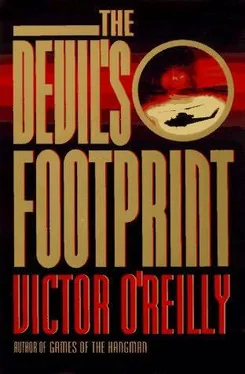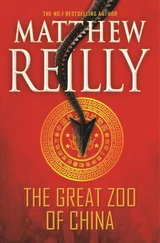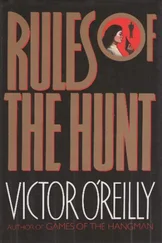Victor O'Reilly - The Devil's footprint
Здесь есть возможность читать онлайн «Victor O'Reilly - The Devil's footprint» весь текст электронной книги совершенно бесплатно (целиком полную версию без сокращений). В некоторых случаях можно слушать аудио, скачать через торрент в формате fb2 и присутствует краткое содержание. Жанр: Триллер, на английском языке. Описание произведения, (предисловие) а так же отзывы посетителей доступны на портале библиотеки ЛибКат.
- Название:The Devil's footprint
- Автор:
- Жанр:
- Год:неизвестен
- ISBN:нет данных
- Рейтинг книги:5 / 5. Голосов: 1
-
Избранное:Добавить в избранное
- Отзывы:
-
Ваша оценка:
- 100
- 1
- 2
- 3
- 4
- 5
The Devil's footprint: краткое содержание, описание и аннотация
Предлагаем к чтению аннотацию, описание, краткое содержание или предисловие (зависит от того, что написал сам автор книги «The Devil's footprint»). Если вы не нашли необходимую информацию о книге — напишите в комментариях, мы постараемся отыскать её.
The Devil's footprint — читать онлайн бесплатно полную книгу (весь текст) целиком
Ниже представлен текст книги, разбитый по страницам. Система сохранения места последней прочитанной страницы, позволяет с удобством читать онлайн бесплатно книгу «The Devil's footprint», без необходимости каждый раз заново искать на чём Вы остановились. Поставьте закладку, и сможете в любой момент перейти на страницу, на которой закончили чтение.
Интервал:
Закладка:
A parachute opened above them, and seconds later a bulky package hit the ground.
Fitzduane grinned at Cochrane. "It's been easy up to now," he said.
Major Khalifa Sherrif might have been a truly terrible map reader, but militarily he was moderately competent.
Under fire, he normally had a reasonable idea of what to do if it was only how to keep his own valuable body out of harm's way. Nonetheless, fighting Indian peasants in Tecuno armed with only shotguns, the odd AK-47 assault rifle, and RPG-7 rocket launchers had not prepared him for this kind of combat.
Rifles that could take out armored personnel carriers at well over a kilometer and aircraft guns that could put a round in every square meter of land in a valley-wide swath were new to him – and quite terrifying.
He thought about the situation. Another column had showed up from the south and he had deployed them around the airstrip. Part of the enemy force had already left – he had seen the Combat Talon taking off in the distance – but at least the remainder were now surrounded somewhere in the narrow end of the funnel and the airstrip had been rendered unusable.
The enemy, whoever they were, but certainly commandos of some kind, were trapped. They had no way out. And by morning the forces around them would be overwhelming. Infantry and armor was converging on the Funnel from every direction.
It was going to work out. The post of military aide to Governor Quintana that he had been after would be his. The minor detail that his armored column had been shot to pieces by the enemy would be glossed over, and anyway there was a useful technique called creative accounting. No one was really going to come out here to the battlefield to take a look.
He switched to consideration of immediate tactics. Sending in armor was for the birds. The burning wrecks of T55s and armored fighting vehicles dotting the valley floor below were blunt proof of that.
No, the best tactic overall was to wait the enemy out and let the sun do its work tomorrow. There was no water in the Funnel, so it would only be a matter of time.
He considered this option. It certainly made the most sense militarily. Still, the politics of the situation also had to be factored in. Surrounding – without doing anything more – did not have a heroic ring, and soldiers were supposed to fight.
He had one platoon of hard cases he used for chasing Indians in the hills. A small group used to this kind of terrain might just do the trick where armor had failed.
He sent them in and watched them as they disappeared into the darkness. In his report, he would lead them, of course. Fortunately, in real life he had more sense and whistled up his sergeant for a cup of tea.
The Bear watched the loadmaster get his end of the Fulton Rescue System ready and tried to get his mind around what was about to happen.
It had been explained to him in some detail during the long flight in, but frankly it was hard to grasp.
It was not that it was complicated. It was more that it was quite loopy. It also was unnatural, decidedly only for the insane, and certainly the most terrifying way of boarding an aircraft that he had ever heard of. Bar none. In his considered opinion, it belonged only in cartoons. He could imagine Bugs Bunny having a high old time with it and Woody Woodpecker chortling with glee. But it was decidedly not for humans.
He thought about the procedure again and shuddered. It made throwing yourself out of an aircraft door with a backpack full of nylon tied together with string appear positively safe.
But if they were to get Fitzduane and his people out of terminal trouble, it was the only way.
The intercom crackled. "We're going in," said the pilot.
The GECAL crews readied their weapons.
And then the firing started.
Fitzduane and Cochrane put on the still-unconscious Lonsdale's suit and then scrambled into their own.
A webbing harness was built into each suit, and that in turn was attached to a line. The line looked disturbingly fragile. It looked scarcely strong enough to support one person, let alone three.
The bulkiest element of the package was a cylinder of helium. Fitzduane connected the helium as indicated and turned on the valve, and with surprising speed an airship-shaped balloon began to appear. It was bigger than he had expected and he wondered why, then realized it had the weight of five hundred feet of line to support.
He released the balloon and it ascended speedily, the line unraveling as it climbed until the umbilical was taut, trembling only slightly as the wind blew at the miniature airship up above.
"Eagle Friend," he said into his radio. "We're ready as we'll ever be – but I feel scared shitless. It'll never work."
"It had better," said Cochrane, who was surveying the approach through binoculars. "The hostiles are learning. There is a platoon-sized group working its way up, and they'll be in range in a couple of minutes."
He raised the Barrett. He was not as good as Al Lonsdale, but he was close. Conventional rifle range and the Barrett's range were two different orders of magnitude.
He aimed and fired rapidly.
The advancing unit's point man, platoon sergeant, and radio operator lay dead on the ground when he had finished, and the rest of the platoon had scurried for cover. Several were wounded by rock splinters gouged out by the massive multipurpose rounds.
There was a roar of aircraft engines and gunfire as Eagle Friend flew down the valley yet again and hosed the surviving mercenary troops.
Major Khalifa Sherrif was waiting with a SAM operator for exactly this development and held his position. Only his head was not under cover, and that seemed a reasonable risk. He wanted to see the kill. The aircraft was flying at just under 500 feet, he estimated, and was keeping surprisingly steady. The trooper would get a lock. They were going to get the aircraft.
The missile leaped from the launcher and soared toward the Combat Talon.
Bright orange fireballs drew glowing streaks in the sky as the Talon fired its antimissile flares.
The heat-seeking SAM, faced with an excess of choice, twisted and turned and plowed into the far side of the valley.
Fitzduane and Cochrane – Lonsdale, still unconscious, held up between them – looked at each other as the huge aircraft approached.
Two eight-foot arms attached to its nose were now extended in an open V to snare the thin line attached to the balloon. The balloon could be detected in the darkness by night-vision goggles, but there was also a strobe light flashing away at the top, shielded from the ground but in the line of sight of the pilot.
The aircraft was going to snare the thin line at something like 125 knots – 156 miles an hour – and Fitzduane did not want to think about what was going to happen next. Whatever he had been told in training, he imagined a horrendous jerk and horrible pain and his body being cut in half by the shock. And anyway, he did not like heights.
"Is this really a good idea?" he said to Cochrane.
"NO!" said Lee Cochrane, the chief of staff of the Congressional Task Force on Terrorism, whose enthusiasm for Washington and all its intrigues had suddenly been revived. I should be on the Hill, he thought. What the hell am I doing here! This stuff is dangerous!
It was a vain thought and ventured upon somewhat late in the day. The engine roar was magnified by the confines of the valley. It was going to happen.
It was happening – and it was unbelievable!
Suddenly, it was directly over them and all they could hear was this terrible throbbing roar and then they were airborne – whipped up into the air with less shock than a parachute opening – and the ground was receding and they were climbing higher and they were through the narrow end of the Funnel and over the abandoned airstrip and they were going higher and higher as the aircraft climbed to avoid mountains ahead and the slipstream whipped at them and it was much colder and Fitzduane realized the reason for the bulky suits.
Читать дальшеИнтервал:
Закладка:
Похожие книги на «The Devil's footprint»
Представляем Вашему вниманию похожие книги на «The Devil's footprint» списком для выбора. Мы отобрали схожую по названию и смыслу литературу в надежде предоставить читателям больше вариантов отыскать новые, интересные, ещё непрочитанные произведения.
Обсуждение, отзывы о книге «The Devil's footprint» и просто собственные мнения читателей. Оставьте ваши комментарии, напишите, что Вы думаете о произведении, его смысле или главных героях. Укажите что конкретно понравилось, а что нет, и почему Вы так считаете.












